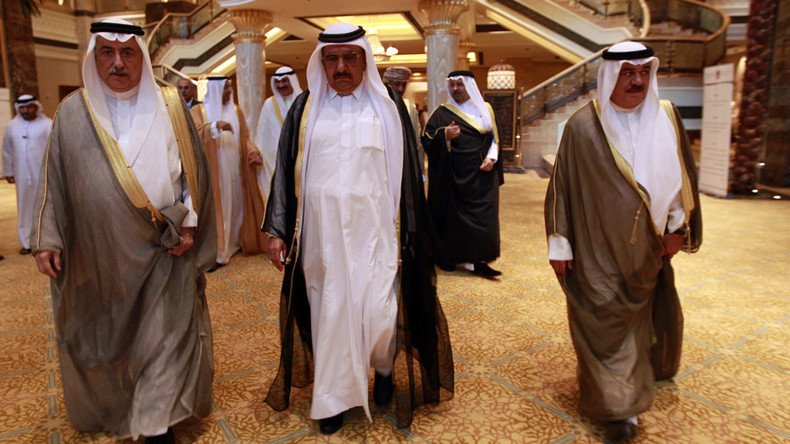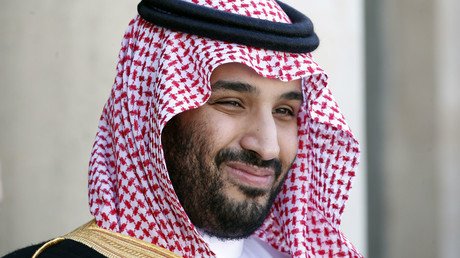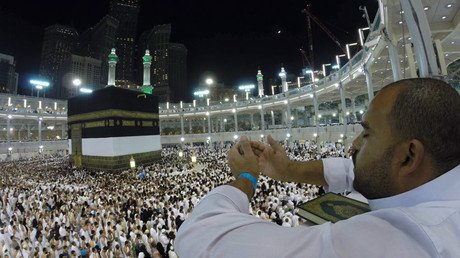Sit back, relax, and enjoy the oil thriller - Pepe Escobar

The famous Hollywood adage – 'nobody knows anything' – seems to perfectly apply to the current turbulence in the oil market. So in an effort to clarify where the global oil economy is heading to, let’s engage in a Battle of the Oil Analysts.
Relying on these Oil Analysts (OA) does not necessarily mean you will be handed straightforward answers, but perhaps with some luck you will see a ray of light.
Saudi Arabia is saying that they are raising oil production to 12 million barrels a day. That’s highly debatable. Russia is saying that they can raise oil production to 13 million barrels a day. OA1 cuts to the chase: “Both are bluffing. Prices are still rising. That means no one believes them.”
OA2 kicks in, reminding that, “oil price is holding because of the 1.5 million barrels a day pulled off the market by a strike in Kuwait of about 10,000 workers. That cut their 3 million barrels a day production in half. Now they are going back to work. Yet the price of oil is still rising.”
I had explained before how the oil price was holding over $40.00 a barrel even with concerted Washington pressure over Saudi Arabia to keep it down. Then, OA3 had told me: “that’s because oil demand and supply is tightening.”
But then OA4 came up with a totally different outlook; the whole thing was about 'The Big Long', upon which I based my prediction of $45/$50 per barrel when I was in Tehran in November 2011 and the price was approaching $100 a barrel. The Saudis have been supporting the price and while they have plenty of capital to do so at high prices, storage is finite. Aligning with this, OA4 added that: “the market is about to crash, and is only being supported by the financial positions of the Saudi/GCC support operation, now unwinding."
OA5, predictably, could not agree that the Saudis are supporting the market and about to let it collapse. He elaborated on how “hard it is to predict day-to-day prices. The only way you can know what is happening is to watch by satellite or surface observation the tankers coming out of each exporter, assume they are full, check their names to look up their capacity, and then add up what is leaving each exporter. What they say otherwise means nothing. There are services that do this that cost about $300,000 a year.”
OA6 kicked in with some perspective, explaining what happened in the middle of 2014: “The oil price started to crash with no visible increase in production. The deduction had to be that the surplus in the Gulf - which was the only place where there was a surplus - was being dumped in the market by the Gulf States, under orders from Washington. And this fit geopolitically with the uprising in Kiev as a replay of Afghanistan.”
If there is a consensus amongst most OAs, it is that Saudi Arabia is hurting. OA7 says he’s been “watching the markets, and a lot of this static comes from Iran trying to break into the market. The Gulf States are trying to prevent that as much as possible and trying to cut Iran's throat.
However, I do not see overall that the situation is deteriorating. Such a severe drop in price restrains production. The amount of excess was not more than about 5 percent of the market; not 20 per cent, as in 1985. It has to be tight now based on macro-logic and that is why a famous Goldman Sachs former trader who picked the collapse is not massively buying.”
Still confused? You should be. Because now another variable kicks in – the rise of US gasoline demand. OA8 has a fine take on the matter: “I was expecting this in the second quarter, not now. We should be over fifty to sixty dollars a barrel then. Fundamentals always prevail in the end.”
The $2 trillion game
So a credible scenario seems to be a world not exactly awash in crude oil, and with the price of a barrel going up soon. And right at this juncture we find China’s CNPC making a play to become a major shareholder of Rosneft – Russia’s top oil producer, which plans to sell 19.5 percent of its shares.
Predictably, US analysts don’t seem to understand why Rosneft may become a top Russia/Chinese-owned corporation. This has nothing to do with selling oil assets when prices are down; Rosneft shares are doing fine, by the way. It’s about the energy/financial consolidation of the Russia-China strategic partnership – from Pipelineistan (those massive, $300 billion gas deals clinched in 2014) to the close connection of Moscow and Shanghai stock exchanges. Translation: all these sophisticated moves further bypass the US dollar.
Oil, in this complex equation, is just one component. For instance, the Ministry of Economic Development in Moscow works with two basic hypotheses: best case at $40 a barrel, and worst case at $25 a barrel. It is duly preparing for both.
And now comes what could be a potential game-changer: the House of Saud’s “vision” for a post-oil economy.
These are the basics, as announced by Warrior Prince Mohammed bin Salman, 30, the conductor of the – illegal - war on Yemen that is overflowing with “collateral damage”. Saudi Arabia’s power stems from its possession of Mecca and Medina, and geostrategic “Arab and Muslim depth”; it’s central to global trade, with 30 percent passing through the Red Sea and the Persian Gulf; and the future lies in the creation of a $2 trillion sovereign wealth fund, coming from the sale of 5 percent of shares in Aramco, the number one oil company on the planet.
Riyadh, we got a problem. Assuming that Aramco’s partial IPO will yield that astonishing $2 trillion, and these funds are invested all across the West, Saudi Arabia could collect around $100 billion a year. Not much; in fact, only 1/6 of Saudi Arabia’s GDP in 2015 ($653 billion, of which 70 percent come from oil exports). In a nutshell: this plan will not deliver Saudi Arabia a viable post-oil economy.
As if this was not enough, the oil hacienda is currently invested in two expensive wars – in Yemen (directly) and Syria (indirectly). Crucial: the Warrior Prince de facto conducts both. Moreover, the House of Saud will continue to buy spectacularly costly weapons from the usual suspects - the US, UK and France - like there’s no tomorrow.
Back to our OAs. OA8 says that the Saudis under the Warrior Prince made a major mistake: “They have now antagonized the Russians and the Americans. Brennan wants their blood no matter what he says as he thinks of them as terrorists. Also, he believes that they have nuclear tipped missiles from Pakistan. The US cannot reconcile themselves to this.”
Moscow, on the other hand, wants friendly relations with Riyadh, but there’s a perception Russia was betrayed at Doha (cutting oil production was a done deal until the Warrior Prince scuttled it on the very day of the signing.)
Which brings us to OA9: “The self-inflicted wound of cutting the oil price by the Saudis for market share is foolish. The time now is to conserve oil and refrain from selling it, awaiting the tripling of the Chinese economy with the Belt and Road plan. Demand in five or ten years would be massive and oil will be then near $200 a barrel.”
So, in the end, our oil thriller will be all about China; Beijing will need to buy all the energy it needs to pursue the completion of the New Silk Roads. Meanwhile, the House of Saud faces a stark choice. Its “post-oil economy” plan will fail, as others before failed. The Warrior Prince must decide which of the superpowers to ally with. If he thinks he can pull it off all by himself, there’s a cab driver gig waiting for him in London. If he can make it to Heathrow in one piece.
The statements, views and opinions expressed in this column are solely those of the author and do not necessarily represent those of RT.
















